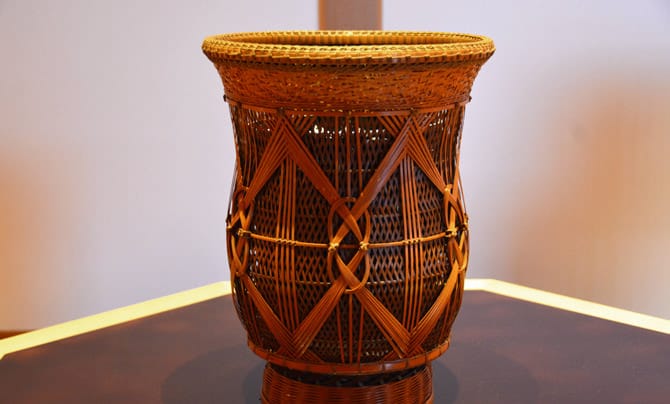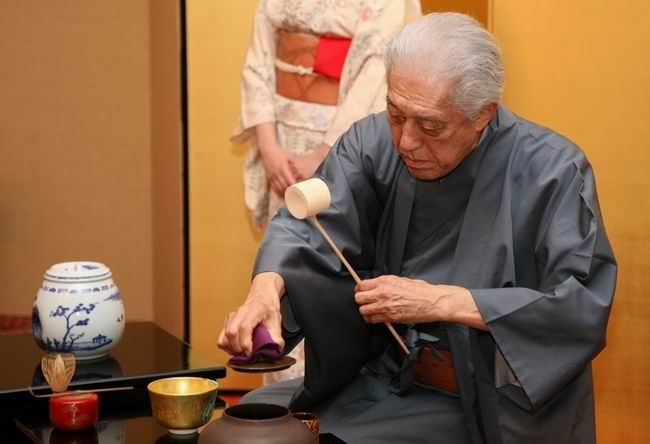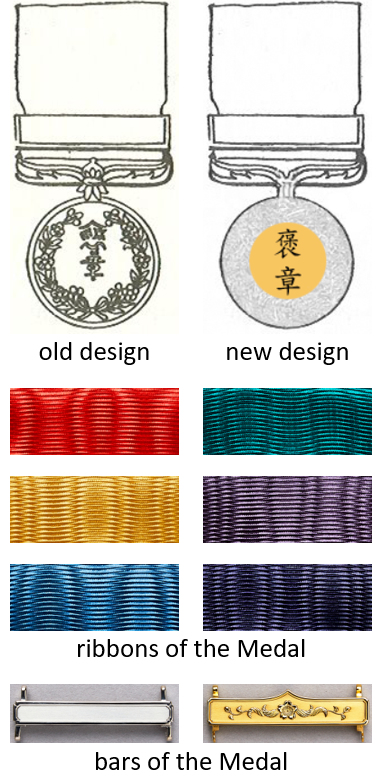|
Fujiko Fujima
was a Japanese dancer. She was the first woman in the field of kabuki to be named a Living National Treasure. Early life Fujima was born Kimiyo Tanaka on October 31, 1907 in Tokyo, Japan. She was adopted by the Fujima family and began studying traditional Japanese dance under Fujima Kan'emon II as a child. She took her professional name in 1926. Career In 1929 Fujima managed a dance troupe. The group went on hiatus during World War II, and restarted their activities in 1947. Her grandson, Fujima Rankoh, became the head of the group later. She also performed abroad in theaters like the Japan America Theater in Los Angeles. Fujima excelled at dances for male characters that are accompanied by tokiwazu music. Her most famous performances are ''Kikujido'' and ''Kagekiyo.'' The latter won the Education Minister's Theater Festival Prize in 1955. She also choreographs dances for kabuki, most notably ''Masakado'' and ''Seki no To.'' She took great care to teach her students about p ... [...More Info...] [...Related Items...] OR: [Wikipedia] [Google] [Baidu] |
Kabuki
is a classical form of Japanese dance-drama. Kabuki theatre is known for its heavily-stylised performances, the often-glamorous costumes worn by performers, and for the elaborate make-up worn by some of its performers. Kabuki is thought to have originated in the very early Edo period, when founder Izumo no Okuni formed a female dance troupe who performed dances and light sketches in Kyoto. The art form later developed into its present all-male theatrical form after women were banned from performing in kabuki theatre in 1629. Kabuki developed throughout the late 17th century and reached its zenith in the mid-18th century. In 2005, kabuki theatre was proclaimed by UNESCO as an intangible heritage possessing outstanding universal value. In 2008, it was inscribed in the UNESCO Intangible Cultural Heritage Lists, UNESCO Representative List of the Intangible Cultural Heritage of Humanity. Etymology The individual kanji that make up the word ''kabuki'' can be read as , , and . ... [...More Info...] [...Related Items...] OR: [Wikipedia] [Google] [Baidu] |
Living National Treasure (Japan)
is a Japanese popular term for those individuals certified as by the Minister of Education, Culture, Sports, Science and Technology as based on Japan's . The term "Living National Treasure" is not formally mentioned in the law, but is an informal term referencing the cultural properties designated as the National Treasures. The Japanese government provides a subsidy of 2 million yen per person per year for Living National Treasures. The total amount of the subsidy is determined by the national budget, and since 2002 it has been 232 million yen. Therefore, the number of Living National Treasures in existence is a maximum of 116, and if there are 116 Living National Treasures, no person with any outstanding skills will be newly designated as a Living National Treasure unless a vacancy occurs due to death. [...More Info...] [...Related Items...] OR: [Wikipedia] [Google] [Baidu] |
Tokyo
Tokyo (; ja, 東京, , ), officially the Tokyo Metropolis ( ja, 東京都, label=none, ), is the capital and largest city of Japan. Formerly known as Edo, its metropolitan area () is the most populous in the world, with an estimated 37.468 million residents ; the city proper has a population of 13.99 million people. Located at the head of Tokyo Bay, the prefecture forms part of the Kantō region on the central coast of Honshu, Japan's largest island. Tokyo serves as Japan's economic center and is the seat of both the Japanese government and the Emperor of Japan. Originally a fishing village named Edo, the city became politically prominent in 1603, when it became the seat of the Tokugawa shogunate. By the mid-18th century, Edo was one of the most populous cities in the world with a population of over one million people. Following the Meiji Restoration of 1868, the imperial capital in Kyoto was moved to Edo, which was renamed "Tokyo" (). Tokyo was devastate ... [...More Info...] [...Related Items...] OR: [Wikipedia] [Google] [Baidu] |
Japanese Traditional Dance
Japanese traditional dance describes a number of Japanese dance styles with a long history and prescribed method of performance. Some of the oldest forms of traditional Japanese dance may be among those transmitted through the tradition, or folk dances relating to food producing activities such as planting rice () and fishing, including rain dances. There are large number of these traditional dances, which are often subfixed , , and , and may be specific to a region or village. and are the two main groups of Japanese dances, and the term was coined in modern times as a general term for dance, by combining (which can also be pronounced ) and (which can also be pronounced ). is a more reserved genre of dance that often has circling movements, and dances of the Noh theatre are of this tradition. A variation of the style of Japanese dance is the or Kyoto-style dance. developed in the 17th century Tokugawa cultural period. It is heavily influenced by the elegance and sophis ... [...More Info...] [...Related Items...] OR: [Wikipedia] [Google] [Baidu] |
World War II
World War II or the Second World War, often abbreviated as WWII or WW2, was a world war that lasted from 1939 to 1945. It involved the vast majority of the world's countries—including all of the great powers—forming two opposing military alliances: the Allies and the Axis powers. World War II was a total war that directly involved more than 100 million personnel from more than 30 countries. The major participants in the war threw their entire economic, industrial, and scientific capabilities behind the war effort, blurring the distinction between civilian and military resources. Aircraft played a major role in the conflict, enabling the strategic bombing of population centres and deploying the only two nuclear weapons ever used in war. World War II was by far the deadliest conflict in human history; it resulted in 70 to 85 million fatalities, mostly among civilians. Tens of millions died due to genocides (including the Holocaust), starvation, ma ... [...More Info...] [...Related Items...] OR: [Wikipedia] [Google] [Baidu] |
Los Angeles
Los Angeles ( ; es, Los Ángeles, link=no , ), often referred to by its initials L.A., is the largest city in the state of California and the second most populous city in the United States after New York City, as well as one of the world's most populous megacities. Los Angeles is the commercial, financial, and cultural center of Southern California. With a population of roughly 3.9 million residents within the city limits , Los Angeles is known for its Mediterranean climate, ethnic and cultural diversity, being the home of the Hollywood film industry, and its sprawling metropolitan area. The city of Los Angeles lies in a basin in Southern California adjacent to the Pacific Ocean in the west and extending through the Santa Monica Mountains and north into the San Fernando Valley, with the city bordering the San Gabriel Valley to it's east. It covers about , and is the county seat of Los Angeles County, which is the most populous county in the United States with an estim ... [...More Info...] [...Related Items...] OR: [Wikipedia] [Google] [Baidu] |
Traditional Japanese Music
Traditional Japanese music is the folk or traditional music of Japan. Japan's Ministry of Education classifies as a category separate from other traditional forms of music, such as (court music) or (Buddhist chanting), but most ethnomusicologists view , in a broad sense, as the form from which the others were derived. Outside of ethnomusicology, however, usually refers to Japanese music from around the 17th to the mid-19th century. Within this framework, there are three types of traditional music in Japan: theatrical, court music, and instrumental. Theatrical Japan has several theatrical forms of drama in which music plays a significant role. The main forms are kabuki and Noh. Noh or music is a type of theatrical music used in Noh theatre. Noh music is played by an instrumental ensemble called . The instruments used are the stick drum, a large hourglass-shaped drum called the , a smaller hourglass-shaped drum called the , and a bamboo flute called the . The ensemble is p ... [...More Info...] [...Related Items...] OR: [Wikipedia] [Google] [Baidu] |
Iemoto
is a Japanese term used to refer to the founder or current Grand Master of a certain school of traditional Japanese art. It is used synonymously with the term when it refers to the family or house that the iemoto is head of and represents. The word is also used to describe a system of familial generations in traditional Japanese arts such as tea ceremony (including ), , Noh, calligraphy, traditional Japanese dance, traditional Japanese music, the Japanese art of incense appreciation (), and Japanese martial arts. and Go once used the system as well. The system is characterized by a hierarchical structure and the supreme authority of the , who has inherited the secret traditions of the school from the previous . Titles An may be addressed by the title or , or by the title or . In English, is often translated as "Grand Master". The 's main roles are to lead the school and protect its traditions, to be the final authority on matters concerning the school, to issue or a ... [...More Info...] [...Related Items...] OR: [Wikipedia] [Google] [Baidu] |
Medals Of Honor (Japan)
are medals awarded by the Government of Japan. They are awarded to individuals who have done meritorious deeds and also to those who have achieved excellence in their field of work. The Medals of Honor were established on December 7, 1881, and were first awarded the following year. Several expansions and amendments have been made since then. The medal design for all six types are the same, bearing the stylized characters on a gilt central disc surrounded by a silver ring of cherry blossoms on the obverse; only the colors of the ribbon differ. If for some reason an individual were to receive a second medal of the same ribbon colour, then a second medal is not issued but rather a new bar is added to their current medal. The Medals of Honor are awarded twice each year, on April 29 (the birthday of the Shōwa Emperor) and November 3 (the birthday of the Meiji Emperor). Types Red ribbon First awarded in 1882. Awarded to individuals who have risked their own lives to save the live ... [...More Info...] [...Related Items...] OR: [Wikipedia] [Google] [Baidu] |
Stomach Cancer
Stomach cancer, also known as gastric cancer, is a cancer that develops from the lining of the stomach. Most cases of stomach cancers are gastric carcinomas, which can be divided into a number of subtypes, including gastric adenocarcinomas. Lymphomas and mesenchymal tumors may also develop in the stomach. Early symptoms may include heartburn, upper abdominal pain, nausea, and loss of appetite. Later signs and symptoms may include weight loss, yellowing of the skin and whites of the eyes, vomiting, difficulty swallowing, and blood in the stool, among others. The cancer may spread from the stomach to other parts of the body, particularly the liver, lungs, bones, lining of the abdomen, and lymph nodes. The most common cause is infection by the bacterium ''Helicobacter pylori'', which accounts for more than 60% of cases. Certain types of ''H. pylori'' have greater risks than others. Smoking, dietary factors such as pickled vegetables and obesity are other risk factors. About 10% ... [...More Info...] [...Related Items...] OR: [Wikipedia] [Google] [Baidu] |
1907 Births
Nineteen or 19 may refer to: * 19 (number), the natural number following 18 and preceding 20 * one of the years 19 BC, AD 19, 1919, 2019 Films * ''19'' (film), a 2001 Japanese film * ''Nineteen'' (film), a 1987 science fiction film Music * 19 (band), a Japanese pop music duo Albums * ''19'' (Adele album), 2008 * ''19'', a 2003 album by Alsou * ''19'', a 2006 album by Evan Yo * ''19'', a 2018 album by MHD * ''19'', one half of the double album ''63/19'' by Kool A.D. * ''Number Nineteen'', a 1971 album by American jazz pianist Mal Waldron * ''XIX'' (EP), a 2019 EP by 1the9 Songs * "19" (song), a 1985 song by British musician Paul Hardcastle. * "Nineteen", a song by Bad4Good from the 1992 album '' Refugee'' * "Nineteen", a song by Karma to Burn from the 2001 album ''Almost Heathen''. * "Nineteen" (song), a 2007 song by American singer Billy Ray Cyrus. * "Nineteen", a song by Tegan and Sara from the 2007 album '' The Con''. * "XIX" (song), a 2014 song by Slipk ... [...More Info...] [...Related Items...] OR: [Wikipedia] [Google] [Baidu] |
1998 Deaths
This is a list of deaths of notable people, organised by year. New deaths articles are added to their respective month (e.g., Deaths in ) and then linked here. 2022 2021 2020 2019 2018 2017 2016 2015 2014 2013 2012 2011 2010 2009 2008 2007 2006 2005 2004 2003 2002 2001 2000 1999 1998 1997 1996 1995 1994 1993 1992 1991 1990 1989 1988 1987 See also * Lists of deaths by day The following pages, corresponding to the Gregorian calendar, list the historical events, births, deaths, and holidays and observances of the specified day of the year: Footnotes See also * Leap year * List of calendars * List of non-standard ... * Deaths by year {{DEFAULTSORT:deaths by year ... [...More Info...] [...Related Items...] OR: [Wikipedia] [Google] [Baidu] |








